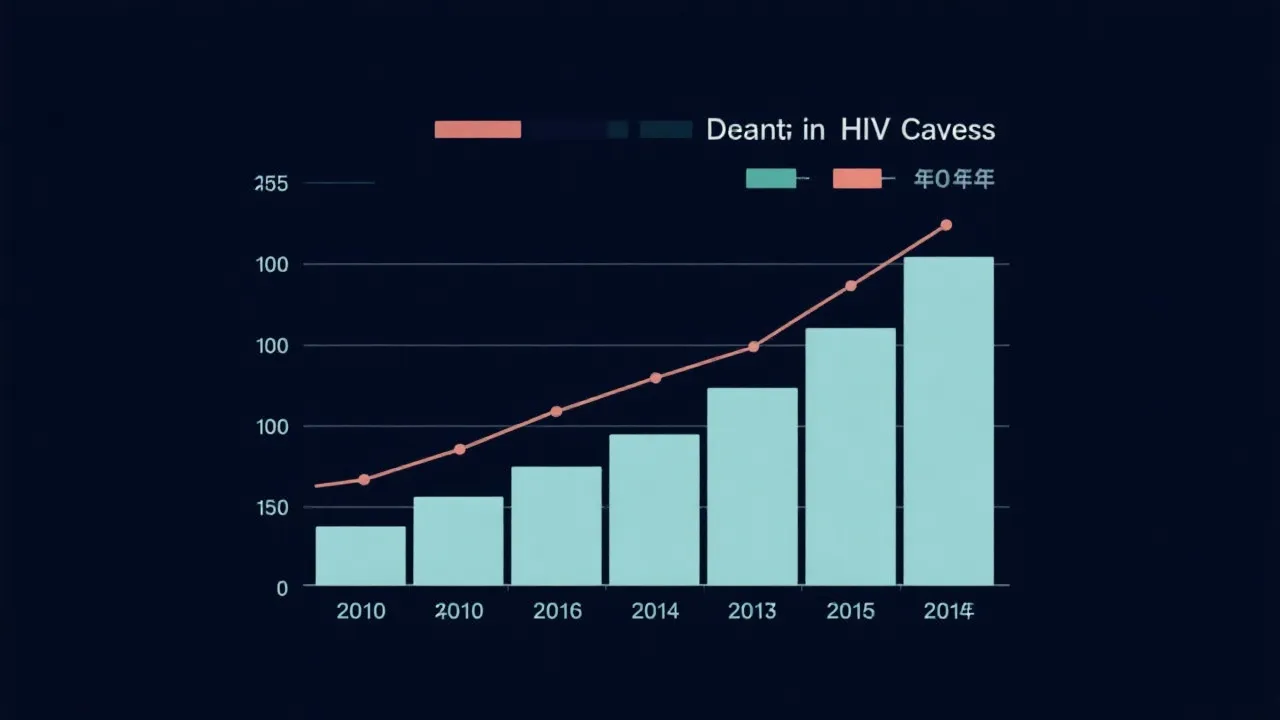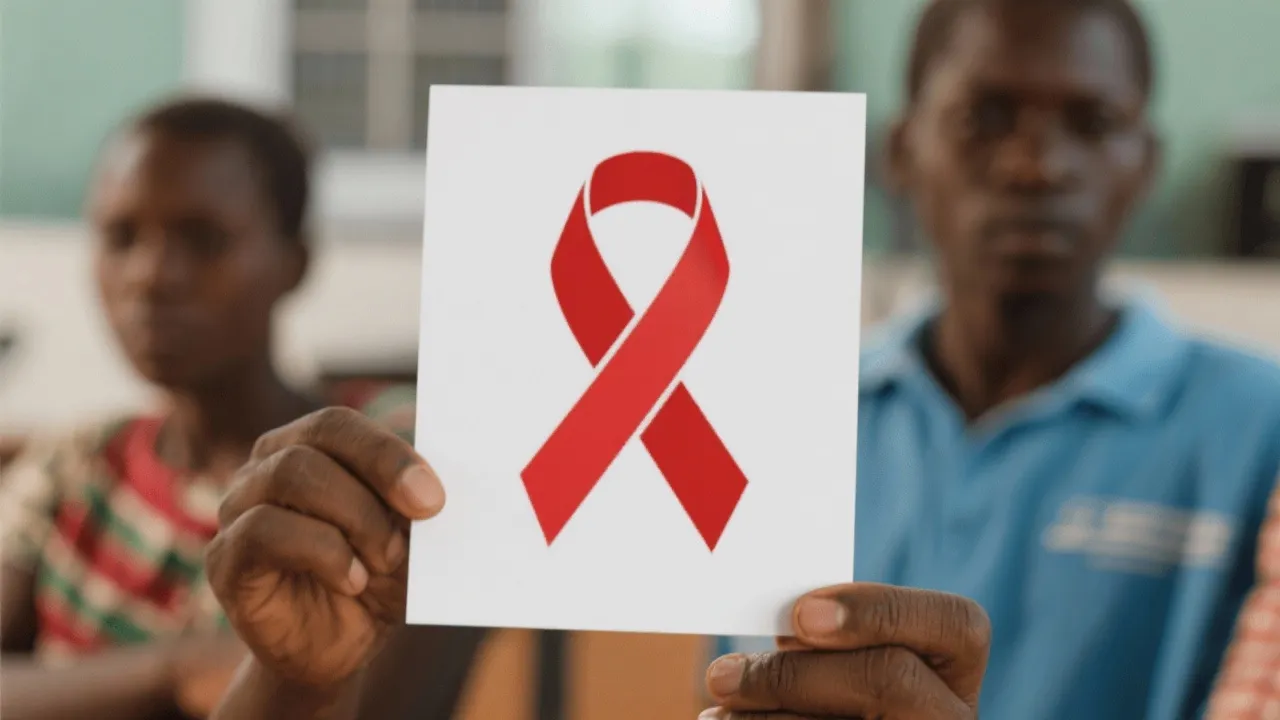Understanding HIV Decline Trends
The decline of HIV cases worldwide marks a significant milestone in public health. Historically, HIV/AIDS posed enormous challenges due to its high transmission rates and complex treatment regimes. However, advances in medical research, widespread awareness, and robust health policies have led to a marked reduction in new cases, offering hope for a future with minimal HIV impact.

The Journey of HIV Decline: An Overview
In recent decades, the global health community has witnessed a promising trend: the notable decline of HIV cases worldwide. This decrease is attributed to various factors, including improvements in medical research, the introduction of effective antiretroviral therapies (ART), and the widespread implementation of educational initiatives. Efforts to increase awareness and access have also played crucial roles in reversing the tide of an epidemic that once seemed insurmountable. In addition, the concerted efforts of activists, healthcare providers, and policymakers have worked to provide a more supportive environment for those affected and promote healthy practices within communities. This comprehensive approach has been essential for not only reducing incidence rates but also improving the overall quality of life for individuals living with HIV.
Historical Context and HIV Epidemiology
HIV, or Human Immunodeficiency Virus, emerged prominently in the 1980s as a global health crisis. As cases surged, it became clear that the virus posed a significant and multifaceted threat to public health, prompting urgent responses from the medical community. Initially, those affected were stigmatized, often regarded as outsiders or individuals engaged in risky behaviors. This stigma contributed to the slow response in the early years of the epidemic, delaying both funding and focused medical research. It was soon evident that the virus was a formidable threat, spreading primarily through unprotected sexual contact, sharing needles, and from mother to child during childbirth or breastfeeding. However, since the peak of the epidemic, new infection rates have significantly declined, particularly in regions that have adopted comprehensive prevention strategies. Today, we understand that HIV does not discriminate; it can affect anyone, regardless of race, gender, or geographic location. This understanding has opened doors for more inclusive prevention and treatment programs that address diverse populations.
Factors Contributing to the Decline
Several key developments have been instrumental in reducing HIV's reach. First and foremost, the advent of ART has revolutionized treatment, transforming HIV from a terminal diagnosis to a manageable chronic condition. These therapies empower patients to suppress viral loads to undetectable levels, which fundamentally alters the dynamics of HIV transmission. As a result, patients now experience improved quality of life, reduced healthcare costs, and lower mortality rates, thus lowering transmission risks, leading to a significant reduction in new infections globally.
Preventative Strategies and Awareness
Public health campaigns emphasizing safe sexual practices, including condom use and regular testing, have been pivotal in educating the public about the importance of preventive measures. These initiatives have been bolstered by grassroots organizations dedicated to promoting sexual health education, thereby fostering an environment where sexual health conversations can occur without stigma. In addition, pre-exposure prophylaxis (PrEP) medications have empowered at-risk populations to safeguard themselves proactively against the virus. The implementation of PrEP has shown promise in reducing new infections in high-risk groups, particularly among gay and bisexual men, as well as among heterosexual women in areas with high rates of HIV prevalence. Furthermore, outreach programs aiming to provide access to testing and treatment, particularly in underprivileged communities, have helped to mitigate the spread of HIV.
The role of education extends beyond preventative strategies. Significant efforts have been made to increase awareness and reduce stigma associated with living with HIV. By employing media campaigns, engaging community leaders, and involving those living with HIV in advocacy, healthcare providers have been able to create more supportive environments for those affected, thereby encouraging individuals to seek testing and treatment.
Need for Continued Research and Global Efforts
Despite progress, challenges remain, particularly in regions with limited healthcare infrastructure. Ongoing research aims to develop innovative solutions such as vaccines and alternative treatment regimens that could enhance the collaborative efforts to combat HIV and AIDS globally. It is critical for international entities, governments, and local communities to collaborate and sustain efforts against HIV. Fundraising programs and international partnerships are essential for gathering resources and providing support in regions where HIV prevalence remains high. Moreover, addressing social determinants of health, including poverty, access to education, and healthcare services, will be vital for sustaining the momentum gained over the past two decades.
Comparative Analysis Table: Global HIV Decline
| Region | Percentage Decline in New Cases (Last Decade) | Key Initiatives |
|---|---|---|
| Sub-Saharan Africa | 30% | ART programs, maternity interventions, community education |
| Eastern Europe & Central Asia | 20% | Harm reduction strategies, needle exchange programs |
| North America | 40% | PrEP access, comprehensive sexuality education |
| Western Europe | 25% | Universal healthcare access, public awareness campaigns |
| Asia & Pacific | 15% | Targeted outreach, HIV testing campaigns, educational workshops |
Future Outlook and Challenges
While the decline in HIV cases is encouraging, vigilance remains necessary. Barriers such as healthcare stigma, funding constraints, and socio-political challenges must be addressed to sustain progress. Societal attitudes towards HIV and those living with the virus remain issues in many parts of the world, often resulting in individuals avoiding testing or treatment due to fear of discrimination. Furthermore, emerging threats like drug-resistant strains of the virus require continual research and adaptation of treatment protocols. The increasing prevalence of multi-drug resistant HIV strains poses a significant challenge in treatment strategies and necessitates the ongoing development of new therapies. Addressing these challenges requires a concerted global effort; by fostering partnerships among governments, non-governmental organizations, and grassroots movements, we can continue to build on the progress made.
Frequently Asked Questions
Q: What is the primary cause of the decline in HIV cases?
A: The primary contributors include advanced treatment options, such as antiretroviral therapy, and comprehensive preventive measures like PrEP and awareness campaigns. In parallel, community mobilization and education have helped shift societal perspectives on HIV, encouraging more individuals to seek testing and treatment.
Q: Can HIV be completely eradicated?
A: While there is no cure yet, ongoing research seeks to find more effective treatments or potential vaccines. Global efforts focus on minimizing new infections and managing the disease effectively. Continued advances in treatment protocols have increased the life expectancy of individuals living with HIV, contributing to a more hopeful future where the overall health burden of HIV can be significantly reduced.
Q: How have attitudes towards HIV changed over the years?
A: Social stigma around HIV has decreased with increased understanding and awareness, leading to more supportive environments for those living with the virus. However, significant work still remains to ensure comprehensive support for marginalized communities that continue to experience discrimination and barriers to healthcare.
In conclusion, the declining trend of HIV cases signals a hopeful trajectory for global health. By sustaining momentum through robust medical, educational, and political strategies, the goal of reducing HIV's impact remains within reach. The collaborative efforts of individuals and organizations dedicated to fighting HIV, combined with ongoing medical advancements, provide a pathway to a future where those affected by HIV can live full and healthy lives without the fear of stigma and discrimination. The commitment to fostering understanding and compassion within communities will be essential as we move forward in our efforts to combat this epidemic. Engaging younger generations in these conversations and fostering inclusive educational spaces will be vital for sustaining this progress and ultimately achieving a world free from the burden of HIV.





